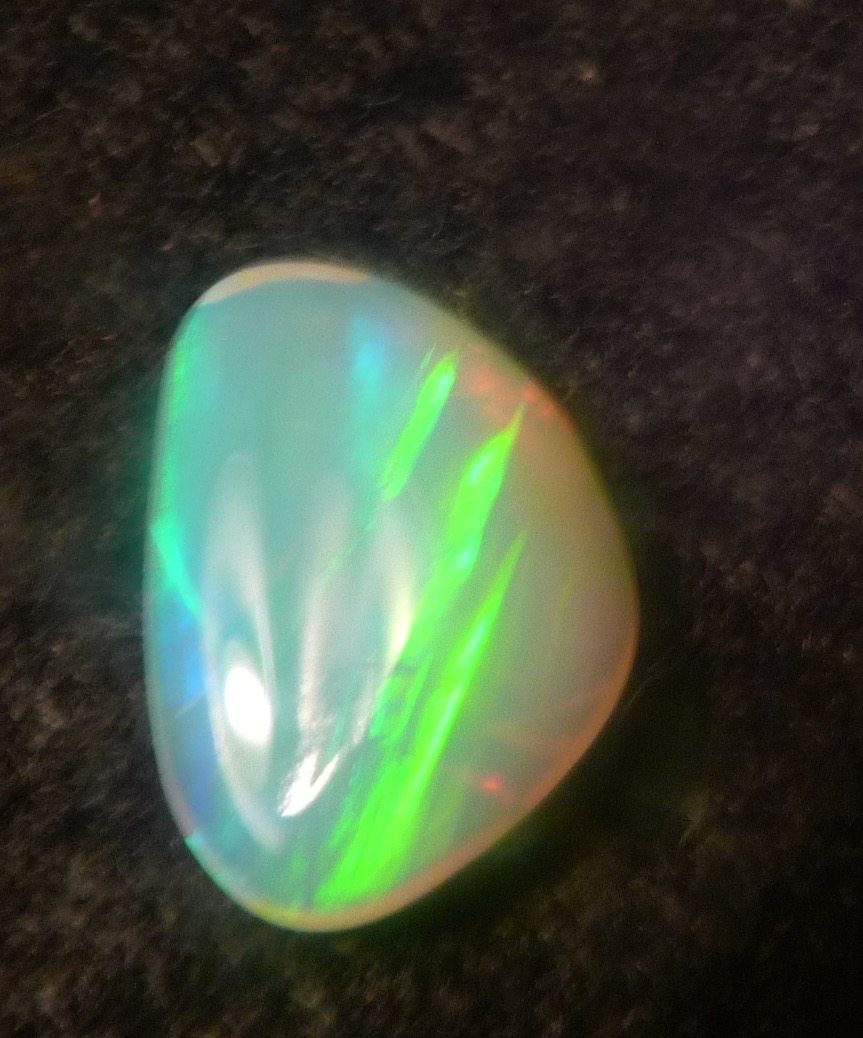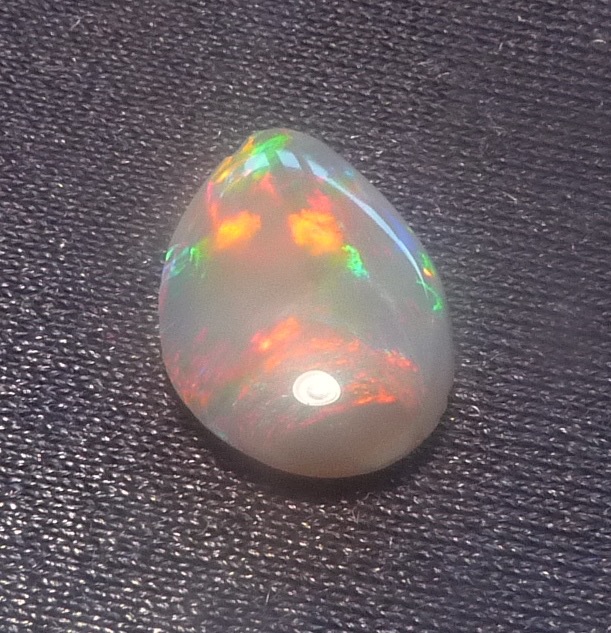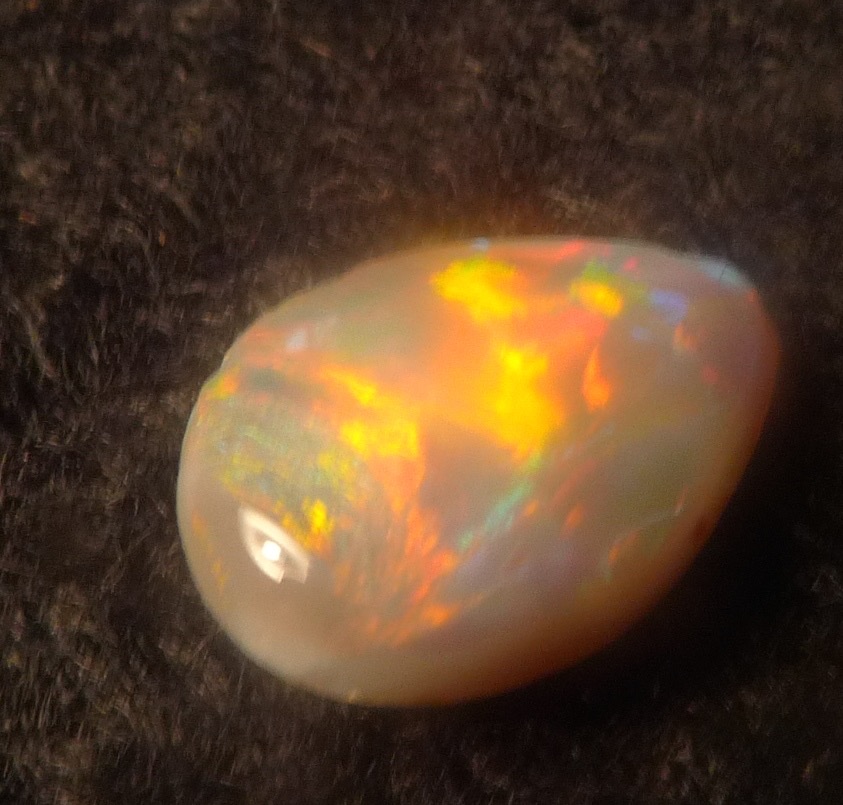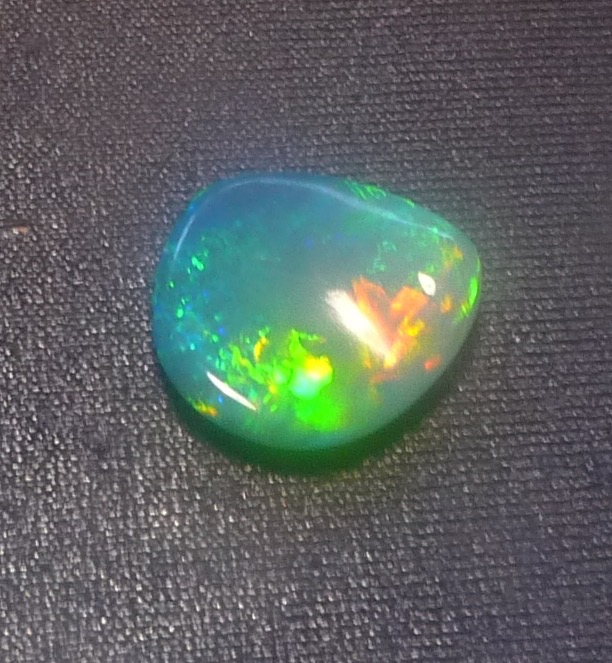Australian Opal
Ausralian Opal is arguably the most beautiful and stable opal in the world. It is an amorphous form of Silica with a water content varying from 3 percent to 21 percent but usually within the range of 5-10 percent. Amorphous is defined as "without any clearly defined shape or form". This means that if an opal is struck it will fracture into irregular shaped pieces.
At a microscopic level opal is comprised of silica spheres. If these spheres are of irregular size and spacing the opal will not show any colours. This form of opal is common opal or potch. If, however , these spheres are of a uniform size and are regularly arranged, then the opal will diffract light and show a display of colours. This is gem opal. The colours shown will depend on the size of the spheres and the spacing.
For those of you that would like more details of this sphere structure click on the link "opal sphere size and "about opal". These two sites show electron microscope photographs of the structure and also explain in a lot more detail, the inner structure of opal.
Opal was deposited at low temperatures between 10 and 20 million years ago. It is generally accepted that the water percolating through the sandstone producing large amounts of dissolved silica. When this silica met up with an impervious layer it spread out and then found its way into cracks and crevices and even cavities left by shells, bones etc. As the water evaporated a silica gel was left which under certain circumstances produced opal. Very special conditions were required and these are not totally understood to this day. The NSW Department of Industry, Resources and Energy lists three of the probable necessities of formation of opal as:
1 A change from alkaline to acidic environment.
2 Presence of Aluminium oxide, ferric oxide or magnesium oxide.
3 Presence of Sodium Chloride or Sodium Sulphate.
These are in addition to the need for a silica source, an impervious layer and a series of cracks, faults and cavities in which the opal can form.
Background Colour of Australian Opal
Australian opal comes in all sorts of background colours. This background colour can be white, grey, red, orange , yellow, green, blue, magenta, rose, pink ,brown or black. The different base colour of opal is due to trace elements incorporated into the base structure of the opal. Iron, nickel, Aluminium and carbon can combine to give this great variation of base colour.
This base colour does not affect the play of colour caused by the diffraction of light within the opal but it can have an effect on the brilliance of the opal. A broad flash on a white base can be far less dramatic than the same flash on a black base colour. Grey and similar base colours are often seen as less desirable than black or pure white backgrounds.

Australian Opal -Crystal with no background colour

Australian Opal - Dark Grey background colour
Australian Opal Classification and Grading
For many gemstones grading and valuation is fairly straightforward. Intensity of colour, clarity and perfection of cut are really all that is necessary. Clearly a well cut diamond that is free of imperfections and is really bright will be more valuable than a dull, poorly cut diamond.
With opal it is a lot more difficult as no two opals are the same. There is a huge variation in colour, a vast variation in patterns of colour and opals can be cut in all sorts of shapes. Also each person can have their own preference as to what sort of opal they prefer and this is important as an opal is only worth what someone is prepared to pay for it.

Australian Opal
An attempt has been made to introduce a form of classification which will enable the relative value of opals to be compared. In 2000, the Australian Gemstone Industry Council in conjunction with the Gemstone Industry produced a classification system that allows comparisons and gradings of Australian Opal to be made.
The system takes into account the following :
(1) Chemical composition and homogenity
(2) Play of colour
(3) Treatment methods
(4) Body tone
(5) Transparency
Rather than reproduce all of the details of this classification method I would refer you to the following sites where a detailed explanation is provided, Click on "Gemology Online" and " Opal Classification" to read more about it.
Andrew Cody has produced a booklet entitled "Australian Precious Opal - A Guide Book for Professionals" which uses this classification and presents coloured photographs of groups of opals graded according to intensity of colour and brilliance. The groupings also have a code number allocated and this helps the average opal buyer or collector to ascertain the relative value of their opal if they compare their opal to the photograph. This book is a very valuable guide to valuing opals although it only shows how to grade the opal and does not set out a dollar figure per carat on the gradings. This is not possible as there are so many variables involved. I do not know if the booklet is still available but you could check out the "Cody Opal" website.

Australian Opal
Opal is a very complex gem. There are such a large number of patterns, colours, background colour and shapes that no two natural opals are exactly the same. That is why opal is so unique.
Johno